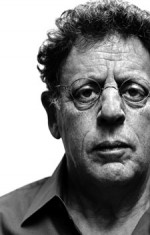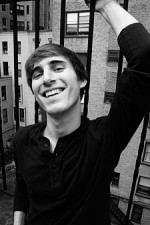Title
For some 27 years I have given a workshop called Performance Problems of 20th- (and now 21st-) Century Music. While we focus on class performance and discussion of pieces that present special challenges, we also cover such issues as relations between performer and audience in unfamiliar repertory (that is, “selling” the music). A central question is how, if one prefers not being confined to music that has already been thoroughly tested, to find appropriate compositions to perform from a seemingly endless stream of new works. We explore various print and electronic resources to hammer home the points that there is interesting music waiting to be found and that there are ways to find it. Yet despite the fine sources of information, nothing substitutes for personal contacts, such as composers, publishers’ representatives, and other performers in the field.
Body
Finding the right music is of continual relevance to the New Juilliard Ensemble, one of the chief outlets for students who want to involve themselves in music outside the standard repertory. N.J.E.’s November 8 concert is a good example of the value of personal contacts and chance encounters. Juilliard was eager to offer some kind of birthday salute to alumnus Philip Glass, who turns 75 on January 31. We hadn’t yet begun exploring the options, however, when a man whom I did not know brought up the subject after an N.J.E. concert. He was Richard Guérin, Glass’s adviser for classical music. I mentioned that I would love to program something by Glass in honor of his birthday, but had the impression that most of his pieces were much too large for N.J.E. Guérin offered to send me a few things, most of which were indeed too large, but two of which seemed marginally possible. I hesitated, because both require sectional strings, and we generally try to keep N.J.E. a soloist ensemble rather than a small orchestra. Occasionally, however, I feel a piece is so special that we should not exclude it, and Glass’s Concerto for Harpsichord (2002) is truly engaging. Furthermore, it offered a performance opportunity for a member of the Historical Performance program. Harpsichordist Elliot Figg thus became the latest addition to the growing list of Historical Performance majors who have played with N.J.E.
Two other pieces on the November 8 program came my way thanks to the pleasantly aggressive promotional work of David Wordsworth, a London choral conductor who also promotes numerous composers. Being familiar with my unwillingness to subscribe to any one compositional dogma, he sends me anything and everything that he likes. To be sure, I don’t always agree with his recommendations, but I am more frequently intrigued by his proposals. One of his current favorites is Arlene Sierra (b. 1970), an American based in the U.K. (and no relation to the well-known Puerto Rican composer Roberto Sierra). Although her Colmena (“beehive” in Spanish) was done recently at Columbia’s Miller Theater, I had missed the concert and decided that one way to hear the piece, which was written in 2008, was to conduct it!
Some time ago, Wordsworth also sent me some music by British composer Richard Causton (b. 1971). I had programmed his Phoenix, for quintet, in the 2001 Summergarden series at MoMA, where it made a strong impression on the players and the audience. Causton himself attended rehearsals and so inspired the performers with his exacting ear and vivid imagination that I felt his Chamber Symphony (2009), for sinfonietta and recorded sounds, was a must for the current N.J.E. season.
Exacting hearing and great imagination are also characteristics of Vassar music professor Richard Wilson (b. 1941). In this case, “personal contact” is truly personal: Wilson has been a colleague and friend since 1959, and I had been interested in his music for a long time, but he had nothing of a size suitable for N.J.E. I am always hesitant to suggest that a composer write a piece when a commissioning fee is unavailable, but when I mentioned my regret that he had nothing for about 15 players, he offered to write a piece. In his program note for the work, Speculation, Wilson sweetly said, “In the summer of 1961, Joel Sachs and I traveled around the world as co-accompanists of the Harvard Glee Club. In the 50 years since, he has established himself as a prominent conductor and discoverer of composers of all different styles and manners from far-flung regions—often hitherto unexplored by presenters in the United States. I, on the other hand, have remained largely in Poughkeepsie, writing music, teaching at Vassar, and reading about Joel’s accomplishments in The New York Times. This 10-minute work for chamber ensemble is our first collaboration in our long-ago chosen roles as composer and conductor. I have attempted to give each of the 15 instrumentalists moments of prominence as well as of conversational interaction. The title is intended to convey the element of risk that is inherent in writing music. It also pleases me that the word has ‘exploration’ in its etymology.”
The other world premiere on November 8 is Maphead by Conrad Winslow (b. 1985), who received his master’s degree from Juilliard in May. Winslow is one of three winners of last spring’s audition for composition students, who anonymously submit any composition for any scoring. From those submissions, I select one or more composers who seem like they could write something unusual for the N.J.E. scoring of “single everything.” This year’s crop was especially good, and I ended up selecting three. Winslow’s piece leads off; in April, N.J.E. will perform new pieces by Sun Young Park, now a first-year master’s student, and Wei Chieh (Jay) Lin, who will receive his doctorate in May.
Winslow explained his work’s title: “One may think of composers as cartographers, mapping the known musical universe, distorting features of terrain to individual taste, and illuminating unfamiliar lands. In that spirit, here are three maps: ‘Lilt’ encompasses a tripping rhythmic quality and blocks of harmony; ‘Welded Angel’ covers an ethereal junkyard in which strewn slivers and threads lead to a sculpture, inspired by the work of a North Carolinian welder-artist; and ‘Ghost Dance’ takes a motive from a math-rock band called Hella and charts it in a rapid procession of growing variations, leading to a panoramic view of the original.”







